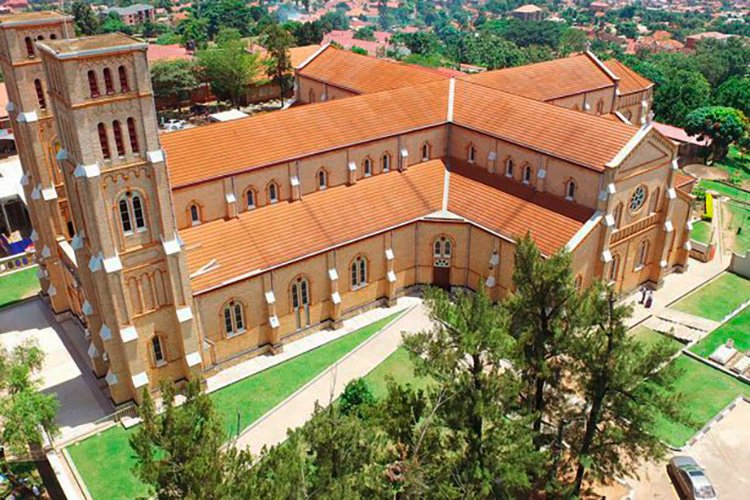Uganda is a land where spirituality and culture intertwine, offering pilgrims and seekers a unique blend of religious experiences. As a nation enriched by diverse faiths, Uganda is home to significant spiritual landmarks that draw visitors from across the globe. From the sacred hills and shrines to historic churches and mosques, the country’s religious heritage reflects its deep connection to faith and tradition.
Religious tourism in Uganda offers the opportunity to explore not only the historical and cultural aspects of these faith-based destinations but also the profound sense of peace and community found in these sacred spaces. Whether you’re looking to trace the footsteps of saints, participate in vibrant religious festivals, or experience spiritual renewal, Uganda provides a transformative journey for every traveler.
Uganda’s rich spiritual landscape includes Christian, Islamic, and indigenous religious sites, offering an inclusive experience for pilgrims of different faiths.
Uganda Martyrs Shrine in Namugongo, the Baha’i House of Worship in Kampala, and the Gaddafi National Mosque are just a few of the country’s revered religious sites.
Religious celebrations such as the Uganda Martyrs Day on June 3rd and Eid festivals highlight the unity and diversity of the Ugandan people.
Uganda’s tranquil religious sites provide visitors with opportunities for reflection, meditation, and prayer.

The Biku Hill in Nebbi district is home to the smallest church in Uganda. With a drive of about 18km from Nebbi town, this church has a width of 2.5m and a height of 8ft, only accommodating 3 people including the preacher at a time. The building has 12 windows on the Eastern and Western sides, representing the 12 disciples of Jesus Christ. There are 39 windows at the back, which signify the books of the Old Testament and 27 others that signify the books of the New Testament.
The church’s strategic location provides excellent views of the Namrwodo Falls, home to the Shoebill Stock, a fascinating bird from the pre-historic times highly sought after by birders.
Namugongo Shrine is a sacred site honoring the Uganda Martyrs, who were executed in the late 19th century for their Christian faith. Located near Kampala, the shrine marks the place where many martyrs were burned alive. It serves as a major pilgrimage destination, drawing thousands of Catholic and Anglican faithful annually on June 3rd to commemorate their courage and sacrifice. The shrine features churches, monuments, and gardens, symbolizing unity and resilience in Uganda’s religious history.


The Bahai Temple in Uganda, located in Kampala, is a distinctive architectural marvel and a spiritual sanctuary for followers of the Bahai Faith. Completed in 1961, it is renowned for its unique design featuring a dome surrounded by serene gardens. The temple welcomes visitors of all backgrounds to explore its tranquil surroundings and learn about the Bahai teachings of unity, equality, and global harmony.
The Gaddafi Mosque, officially known as the Uganda National Mosque, is a prominent Islamic landmark in Kampala, Uganda. Completed in 2006 and funded largely by the late Libyan leader Muammar Gaddafi, it is one of the largest mosques in Africa, with a capacity to accommodate over 15,000 worshippers. The mosque’s impressive minaret offers panoramic views of Kampala, and its striking architecture blends modern design with traditional Islamic influences, making it a significant cultural and religious symbol in Uganda.


Rubaga Cathedral, located in Kampala, Uganda, is a historic and prominent Roman Catholic cathedral. Completed in 1925, it stands on a hill overlooking the city, serving as a symbol of faith and spirituality for Catholics in Uganda. The cathedral’s impressive architecture, with its twin towers and large dome, reflects both European and local influences. It is a revered pilgrimage site and a center for religious ceremonies, embodying a rich blend of cultural heritage and religious devotion in Uganda.
Bishop Hannington Church, located in Kyando, Uganda, honors the legacy of James Hannington, an Anglican bishop martyred in 1885. The church serves as a testament to his missionary work and commitment to spreading Christianity in Uganda. It stands as a place of worship and pilgrimage, embodying both historical significance and religious devotion within the local community.


St. Paul’s Namirembe Cathedral, situated in Kampala, Uganda, is a notable Anglican cathedral known for its elegant architecture and historical significance. Built in 1919, it stands atop Namirembe Hill, offering sweeping views of Kampala. The cathedral serves as a hub for Anglican worship and community activities, embodying a blend of local and colonial architectural styles. It is revered as a symbol of faith and heritage, attracting visitors and worshippers alike to its serene surroundings and vibrant religious life
Whether seeking pilgrimage, cultural immersion, or moments of reflection, Uganda’s religious tourism promises a journey filled with meaning, peace, and discovery.
Explore Uganda’s spiritual gems and be part of a legacy that transcends faith and time.